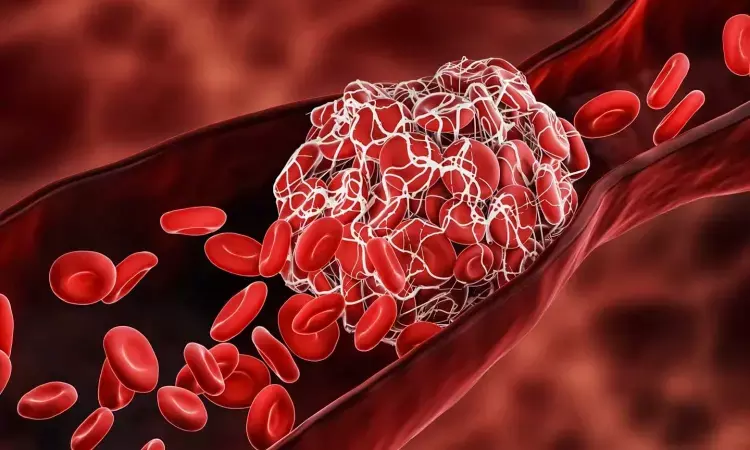- Home
- Medical news & Guidelines
- Anesthesiology
- Cardiology and CTVS
- Critical Care
- Dentistry
- Dermatology
- Diabetes and Endocrinology
- ENT
- Gastroenterology
- Medicine
- Nephrology
- Neurology
- Obstretics-Gynaecology
- Oncology
- Ophthalmology
- Orthopaedics
- Pediatrics-Neonatology
- Psychiatry
- Pulmonology
- Radiology
- Surgery
- Urology
- Laboratory Medicine
- Diet
- Nursing
- Paramedical
- Physiotherapy
- Health news
- Fact Check
- Bone Health Fact Check
- Brain Health Fact Check
- Cancer Related Fact Check
- Child Care Fact Check
- Dental and oral health fact check
- Diabetes and metabolic health fact check
- Diet and Nutrition Fact Check
- Eye and ENT Care Fact Check
- Fitness fact check
- Gut health fact check
- Heart health fact check
- Kidney health fact check
- Medical education fact check
- Men's health fact check
- Respiratory fact check
- Skin and hair care fact check
- Vaccine and Immunization fact check
- Women's health fact check
- AYUSH
- State News
- Andaman and Nicobar Islands
- Andhra Pradesh
- Arunachal Pradesh
- Assam
- Bihar
- Chandigarh
- Chattisgarh
- Dadra and Nagar Haveli
- Daman and Diu
- Delhi
- Goa
- Gujarat
- Haryana
- Himachal Pradesh
- Jammu & Kashmir
- Jharkhand
- Karnataka
- Kerala
- Ladakh
- Lakshadweep
- Madhya Pradesh
- Maharashtra
- Manipur
- Meghalaya
- Mizoram
- Nagaland
- Odisha
- Puducherry
- Punjab
- Rajasthan
- Sikkim
- Tamil Nadu
- Telangana
- Tripura
- Uttar Pradesh
- Uttrakhand
- West Bengal
- Medical Education
- Industry
What are Vascular Manifestations of Tuberculous Meningitis?

A recent study published by doctors of AIIMS Bhubaneshwar, highlights the vascular manifestations of tubercular meningitis (TBM), showing predominant arterial involvement causing infarcts which are usually seen in the tubercular zone, and occasional venous involvement causing cerebral venous sinus thrombosis.
The study is a cross section observational study, which was published in Journal of Neuroscienences in Rural Practice, was conducted by Naik et al. They enrolled thirty consecutive patients of clinically diagnosed TBM. Apart from T2-weighted imaging, T1-weighted imaging (T1WI), diffusion-weighted imaging, susceptibility-weighted imaging, fluid-attenuated inversion recovery, and postcontrast T1WI, time-of-flight (TOF) MRA and postcontrast MRV were done in all the patients. MRV was done after intravenous administration of gadolinium-based contrast agent followed by postcontrast T1WI. MRA and MRV findings were analyzed.
MRI findings were analyzed for the presence or absence of leptomeningeal enhancement, pachymeningeal enhancement, basal exudates, tuberculomas, abscess, ventriculitis, hydrocephalus, and vasculitic infarcts. The location of the cerebral infarcts was documented. The location and characteristics of tuberculoma were noted. MRA and MRV abnormalities were also analyzed by two radiologists with more than 11 years of experience.
They found Twenty-nine TBM (96.7%) patients had an abnormality on MRI. MR abnormalities were in varying combinations of leptomeningeal enhancement in 24 (80%), pachymeningeal enhancement in 2 (6.7%), both lepto- and pachymeningeal enhancement in 3 (10%), tuberculomas in 13 (43.3%), ventriculitis in 1 (3.3%), hydrocephalus in 16 (53.3%), and infarcts in 10 (33.3%). Cerebral infarcts were seen in 10 (33.3%) patients, out of which the tubercular zone is involved in 9 patients.
Arterial abnormality on TOF MRA was noted in 13 (43.3%) patients. The significant arterial narrowing was noted in four patients, whereas mild irregularity of vessels was noted in nine patients. Cerebral venous sinus thrombosis (CVST) was noted in two (6.7%) of patients. Both were female.
TBM is the most severe form of extrapulmonary TB. Cerebrovascular complications in TBM have been reported as a poor prognostic predictor. Vascular complications associated with TBM are usually secondary to arteritis causing arterial vasculitic infarcts.
The authors conclude that CVST in tubercular meningitis is rare and the clinical pictures may be overlapping. Early diagnosis and management are required for better outcome of the patient. Contrast-enhanced MRV with postcontrast T1WI is required for diagnosis of sinus thrombosis and meningitis. In TBM, there is predominant arterial involvement causing infarcts. However, occasionally, there may be venous involvement causing CVST.
Reference : Vascular Manifestations of Tuberculous Meningitis: MR Angiography and Venography Study
Suprava Naik , Sanjeev Kumar Bhoi , Nerbadyswari Deep , Sudipta Mohakud , Baijayantimala Mishra , Anupam Dey , Rajesh Kumar , Gautom Kumar Saharia , Mukesh Kumar
J Neurosci Rural Pract 2022; 13(03): 529-536
DOI: 10.1055/s-0042-1748175
MBBS, DrNB Neurosurgery
Krishna Shah, MBBS, DrNB Neurosurgery. She did her MBBS from GMC, Jamnagar, and there after did direct 6 Year DrNB Neurosurgery from Sir Ganga Ram Hospital, Delhi. Her interests lie in Brain and Spine surgery, Neurological disorders, minimally invasive surgeries, Endoscopic brain and spine procedures, as well as research.
Dr Kamal Kant Kohli-MBBS, DTCD- a chest specialist with more than 30 years of practice and a flair for writing clinical articles, Dr Kamal Kant Kohli joined Medical Dialogues as a Chief Editor of Medical News. Besides writing articles, as an editor, he proofreads and verifies all the medical content published on Medical Dialogues including those coming from journals, studies,medical conferences,guidelines etc. Email: drkohli@medicaldialogues.in. Contact no. 011-43720751


